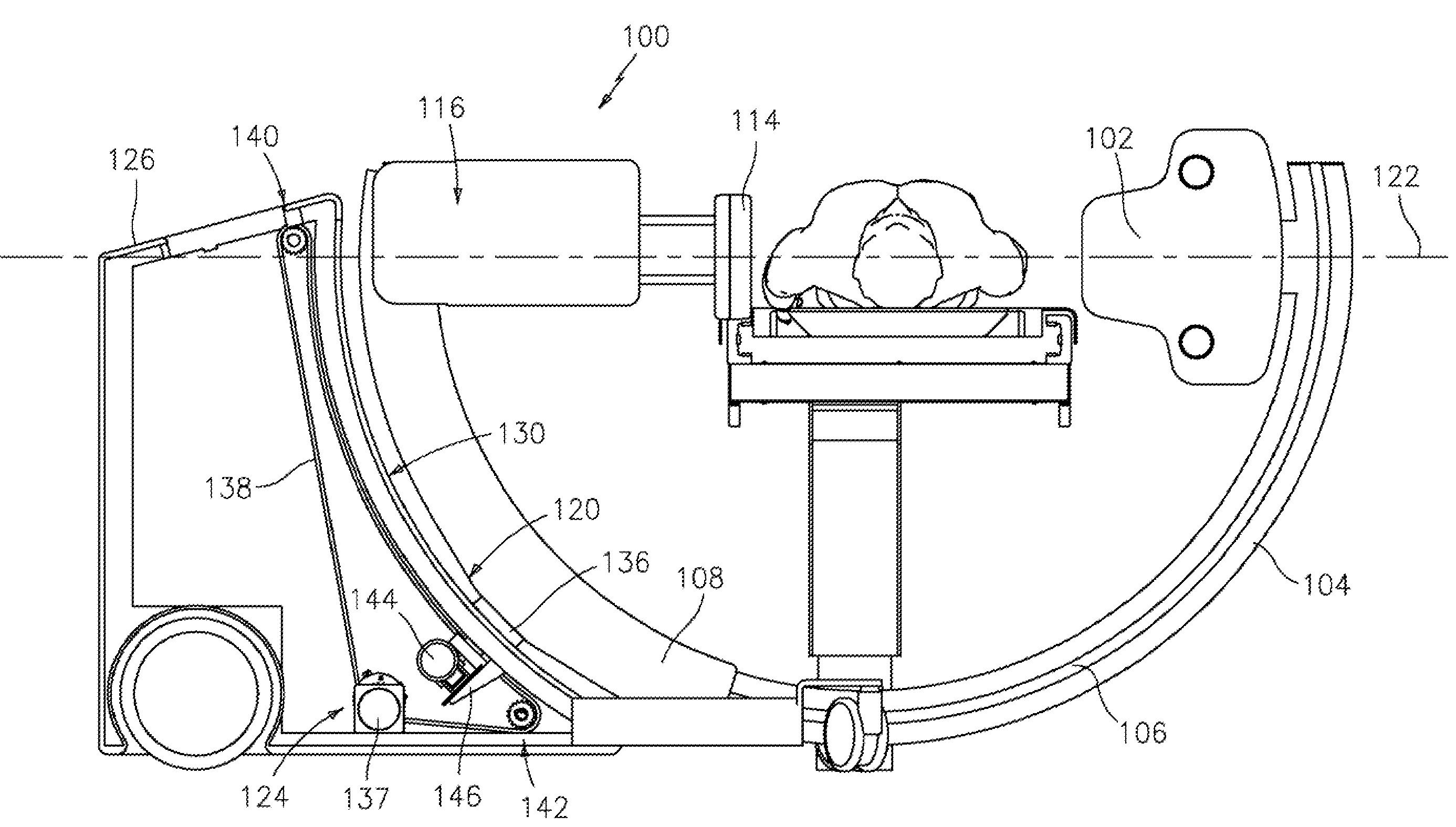Angio capable portable x-ray fluoroscopy unit with sliding C-arm and variable pivot
a fluoroscopy unit and portable technology, applied in the field of portable x-ray fluoroscopy units with sliding c-shaped arms, can solve the problems of inability to carry heavy equipment without dangerous power-driven operation, large c-arms are difficult to balance, and the device is so bulky that it cannot be used in parallelograms. the effect of improving the efficacy
- Summary
- Abstract
- Description
- Claims
- Application Information
AI Technical Summary
Benefits of technology
Problems solved by technology
Method used
Image
Examples
Embodiment Construction
[0037]Referring to FIGS. 1-7, Applicant has disclosed a preferred embodiment of an “Angio Capable Portable X-Ray Fluoroscopy Unit with Sliding C-Arm and Variable Pivot Point.” This new Portable C-Arm system keeps the well-known sliding C concept, but improves its efficacy. The novel system overcomes the prior limited range of Portable C-Arm systems by adding a motor driven, variable location of the axle pivot, but keeping a sliding C-arm mount.
[0038]As with U.S. Pat. No. 6,789,941 (“Grady '941”) issued Sep. 14, 2004 to the current Applicant, John Grady (hereby incorporated by reference), the drawings for Applicant's present embodiment depict a portable C-arm support apparatus 100. The portable C-arm support includes a large radius C-arm (preferably made of carbon fiber) 104 having slide travel rails (e.g., 106) on opposite sides of the C. These slide rails, together with a mid-length of the C-arm 104, can travail within an outer, shorter C-sleeve (a.k.a. “C-slider housing”) 108. The...
PUM
 Login to View More
Login to View More Abstract
Description
Claims
Application Information
 Login to View More
Login to View More - R&D
- Intellectual Property
- Life Sciences
- Materials
- Tech Scout
- Unparalleled Data Quality
- Higher Quality Content
- 60% Fewer Hallucinations
Browse by: Latest US Patents, China's latest patents, Technical Efficacy Thesaurus, Application Domain, Technology Topic, Popular Technical Reports.
© 2025 PatSnap. All rights reserved.Legal|Privacy policy|Modern Slavery Act Transparency Statement|Sitemap|About US| Contact US: help@patsnap.com



